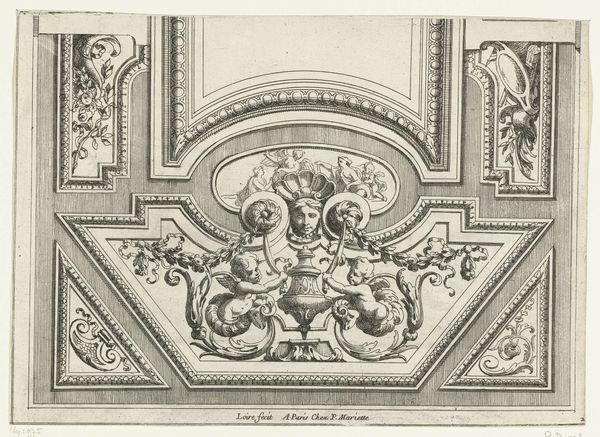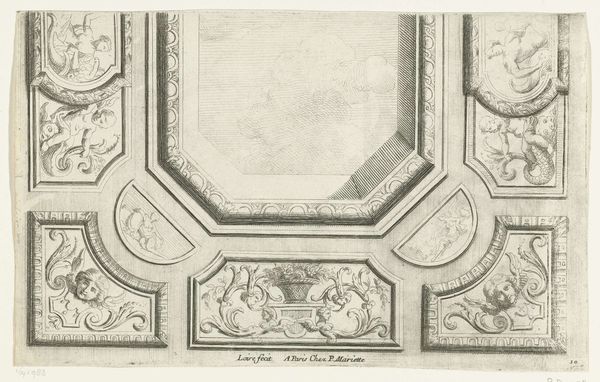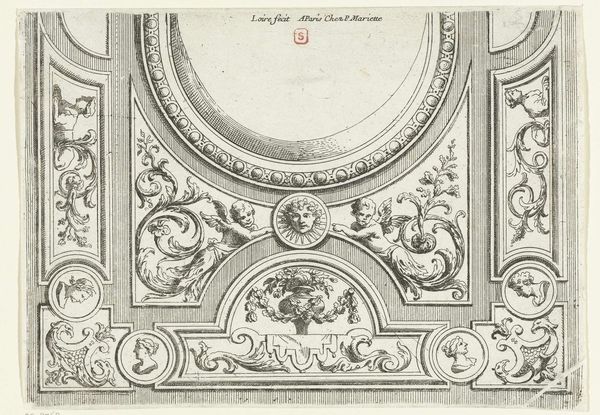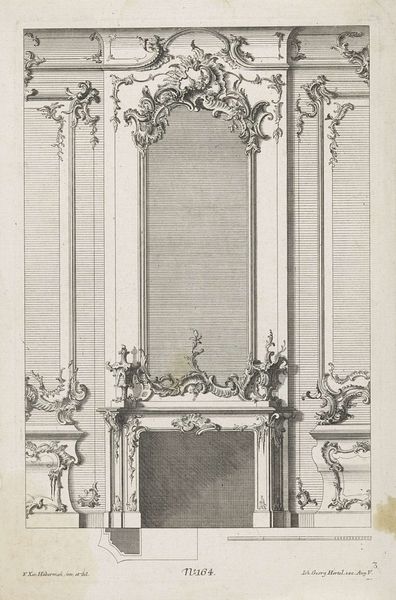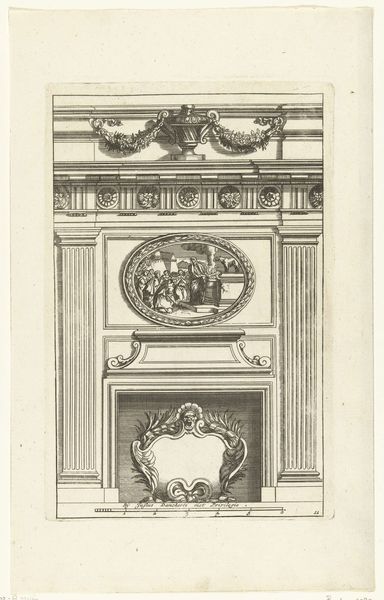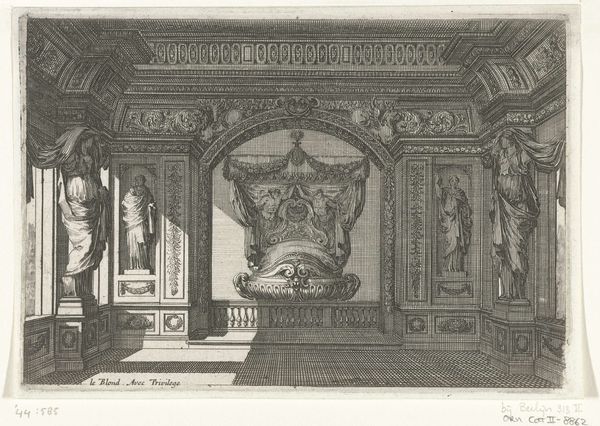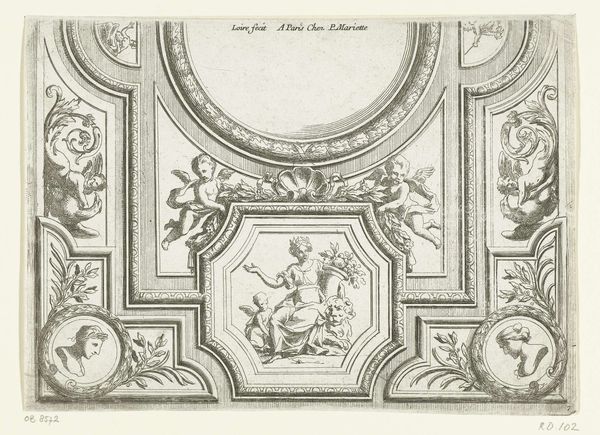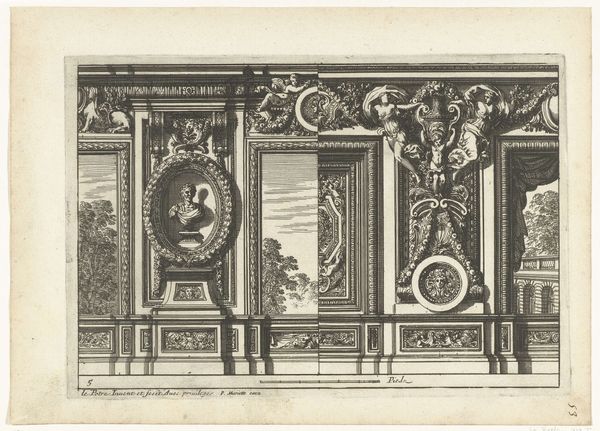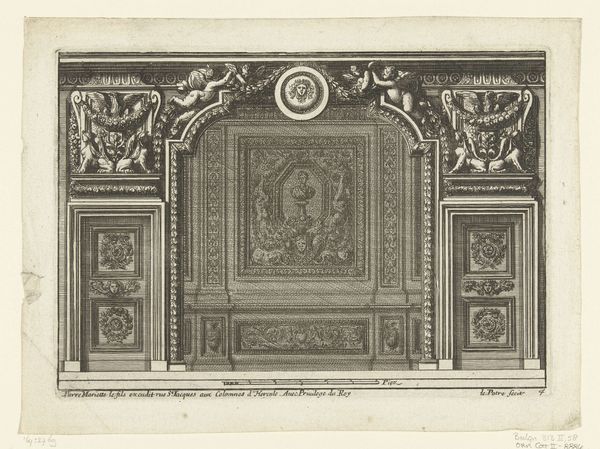
drawing, print, engraving
#
drawing
#
baroque
# print
#
line
#
engraving
Dimensions: height 165 mm, width 220 mm
Copyright: Rijks Museum: Open Domain
Editor: This line engraving, “Helft van langwerpig plafond”, created between 1634 and 1716, and residing at the Rijksmuseum, strikes me as incredibly intricate. The way the lines create form and shadow is fascinating. How do you interpret its historical context and intended purpose? Curator: Well, considering the period, this drawing offers insights into the societal role of art. These decorative prints were not merely aesthetic; they were integral to the construction of status and power. How might the ownership and display of such a design reinforce existing hierarchies? Editor: It seems that displaying such an elaborate ceiling design would communicate wealth and sophistication. Curator: Precisely. Think about the patronage system during the Baroque era. Aristocrats and wealthy merchants commissioned works like these to project their cultivated image. How does understanding the socio-economic context change our perception of the print itself? Editor: It makes me think about who had access to this kind of beauty and how it shaped their view of the world. Curator: Indeed. These kinds of prints also circulated artistic ideas and promoted particular styles across different workshops and regions. Do you think the print's function as a disseminator of style could have impacted artistic expression in its time? Editor: Absolutely! It offered a visual vocabulary and style to builders, artisans, and their patrons, democratizing access and driving creativity within those boundaries. I hadn’t considered the extent to which prints shaped interior spaces of that era. Curator: I think paying attention to these social and economic dynamics surrounding art opens us to new avenues for historical study.
Comments
No comments
Be the first to comment and join the conversation on the ultimate creative platform.
